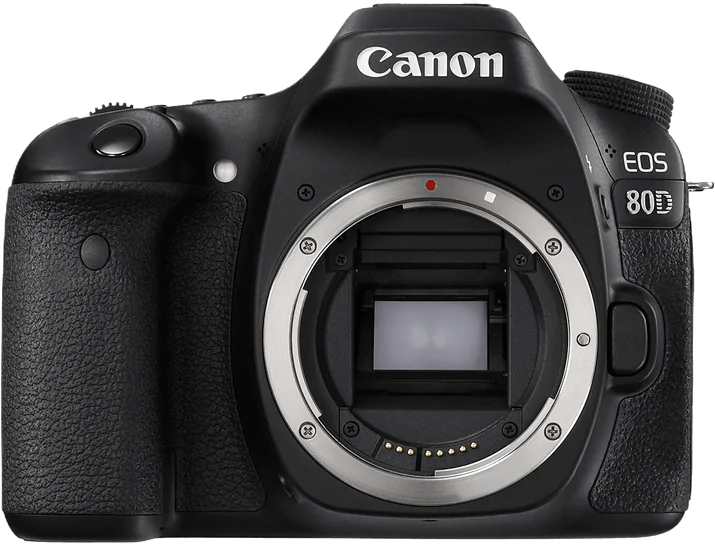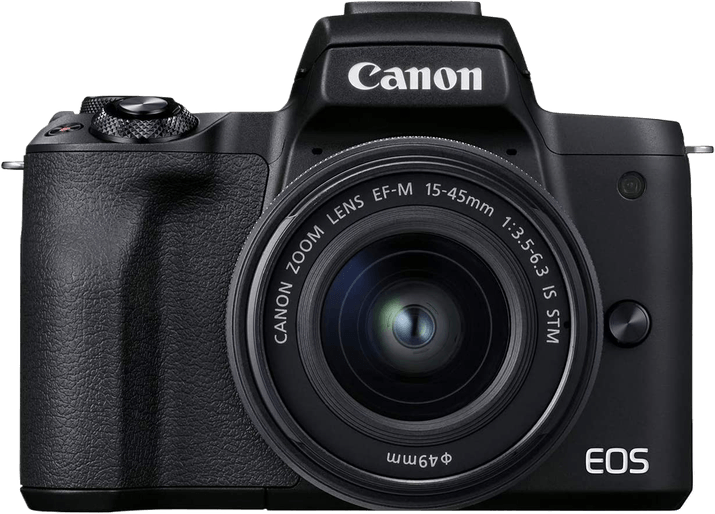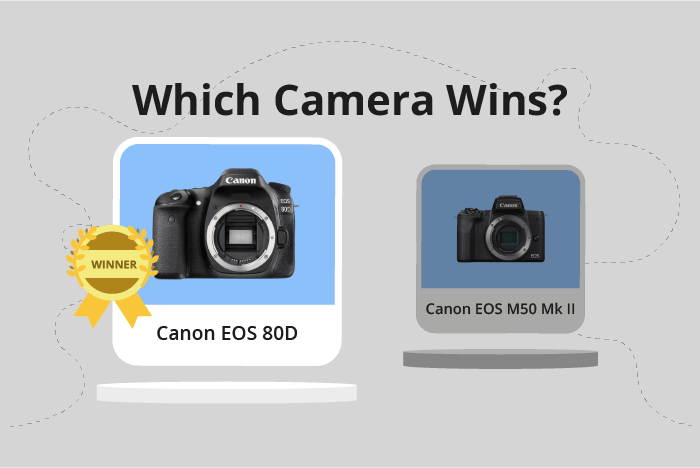Canon EOS 80D vs EOS M50 Mark II Comparison
Canon EOS 80D

Canon EOS M50 Mark II

The Canon EOS 80D takes the lead with a score of 64/100, while the Canon EOS M50 Mark II trails slightly behind at 59/100. Both cameras share similarities, such as being part of Canon’s EOS lineup and offering advanced features for photography enthusiasts.
The EOS 80D, a DSLR released in 2016, is better in terms of overall performance. Its larger size (139 x 105 x 79mm) and heavier weight (730g) may provide a more robust and comfortable grip for extended shooting sessions. Additionally, the higher score reflects its superiority in other areas of performance.
On the other hand, the EOS M50 Mark II, a mirrorless camera released in 2020, offers a more compact and lightweight design, measuring 116 x 88 x 59mm and weighing only 387g. This makes it an ideal choice for those prioritizing portability and ease of use. Moreover, its lower launch price of $750 compared to the EOS 80D’s $1200 makes it a more budget-friendly option.
Taking these factors into account, the Canon EOS 80D edges out the EOS M50 Mark II in terms of overall performance, while the M50 Mark II offers a more portable and cost-effective alternative.
Canon EOS 80D vs EOS M50 Mark II Overview and Optics
The Canon EOS 80D outperforms the Canon EOS M50 Mark II in optics, scoring 63/100 compared to the latter’s 59/100. Both cameras have similarities in specifications, including 24.2 and 24 megapixels, CMOS sensor type, APS-C sensor size, and no image stabilization. However, the EOS 80D has a higher DXOMARK score for the sensor at 79, while the M50 Mark II scores 58.
The EOS 80D’s higher sensor score results in better image quality and low light performance. Additionally, it uses a Digic 6 processor, which contributes to its superior optics score. The 80D also features a Canon EF-S lens mount, offering compatibility with a vast range of lenses, enabling users to adapt to various shooting conditions and requirements.
On the other hand, the M50 Mark II has a faster shooting speed of 10 frames per second, compared to the 80D’s 7 fps. This advantage allows the M50 Mark II to capture fast-moving subjects more effectively. The camera also employs a more advanced Digic 8 processor, which enhances its overall performance and processing speed.
Despite its lower optics score, the M50 Mark II remains a competitive option due to its faster shooting speed and advanced processor. However, the 80D’s superior sensor score, image quality, and lens compatibility make it the better choice for those prioritizing optics performance. Ultimately, the choice between these cameras depends on individual preferences and specific photography needs.
Canon EOS 80D vs EOS M50 Mark II Video Performance
The Canon EOS M50 Mark II outperforms the Canon EOS 80D in video capabilities with a video score of 91/100, compared to the 80D’s 70/100. Both cameras share some common features, such as having time-lapse functionality built-in, which is a useful feature for capturing stunning time-lapse sequences.
The M50 Mark II’s superior video performance is due to its higher maximum video resolution of 4K (3840 x 2160), compared to the 80D’s Full HD (1920 x 1080) resolution. This difference in resolution allows the M50 Mark II to produce clearer and more detailed video footage. Moreover, the M50 Mark II has a higher maximum video frame rate of 120fps, while the 80D is limited to 60fps. This higher frame rate enables the M50 Mark II to capture smooth slow-motion footage, providing greater creative flexibility for videographers.
Despite its lower video score, the 80D still has some advantages in specific scenarios. For example, if a user does not require 4K resolution or slow-motion capabilities, the 80D’s Full HD video quality may suffice. Additionally, the 80D’s lower resolution may be beneficial for those with limited storage space or slower computer processing capabilities.
Taking these factors into consideration, the Canon EOS M50 Mark II is the clear winner in terms of video capabilities due to its higher resolution and frame rate. However, the Canon EOS 80D may still be suitable for users with specific needs and preferences that do not require the advanced video features of the M50 Mark II.
Canon EOS 80D vs EOS M50 Mark II Features and Benefits
The Canon EOS 80D and the Canon EOS M50 Mark II are evenly matched in terms of features, both scoring 70 out of 100 points. They share several common specifications, including a 3-inch screen size, a screen resolution of 1040000 dots, a touchscreen, flip screen, GPS, and WIFI capabilities.
The Canon EOS 80D is superior to the M50 Mark II in certain aspects. It has a better autofocus system, offering 45 cross-type autofocus points, compared to the 24 points found in the M50 Mark II. This leads to faster and more accurate focusing, which is essential for capturing fast-moving subjects or shooting in low-light conditions. Additionally, the 80D has a longer battery life, allowing for more extended shooting sessions without the need to change batteries.
On the other hand, the Canon EOS M50 Mark II has its advantages over the 80D. It is a lighter and more compact camera, making it easier to carry around and hold for extended periods. The M50 Mark II also has Bluetooth connectivity, which the 80D lacks. This feature enables seamless pairing with compatible devices, making it easier to transfer images and remotely control the camera.
Taking these points into consideration, it is evident that both the Canon EOS 80D and the Canon EOS M50 Mark II have their strengths and weaknesses. The 80D excels in autofocus performance and battery life, while the M50 Mark II has the edge in portability and connectivity. Ultimately, the choice between these two cameras will depend on the specific needs and preferences of the photographer.
Canon EOS 80D vs EOS M50 Mark II Storage and Battery
The Canon EOS 80D outperforms the Canon EOS M50 Mark II in storage and battery, scoring 43/100 compared to the latter’s 21/100. Both cameras share a single memory card slot, accepting SD, SDHC, and SDXC cards with UHS-I compatibility. However, the EOS 80D has a significant advantage in battery life, offering 960 shots per charge compared to the M50 Mark II’s 305 shots. The EOS 80D uses the LP-E6N battery, while the M50 Mark II uses the LP-E12 battery. Neither camera offers USB charging capabilities.
The EOS 80D’s superior battery life allows for extended shooting sessions, reducing the need to carry spare batteries or frequently replace them. On the other hand, the M50 Mark II does not have any notable advantages in storage and battery over the EOS 80D.
Given these differences, the Canon EOS 80D proves to be a better choice for those prioritizing longer battery life and uninterrupted shooting experiences. The Canon EOS M50 Mark II falls short in this aspect, making it less suitable for extended photography sessions.
Canon EOS 80D vs EOS M50 Mark II – Our Verdict
Are you still undecided about which camera is right for you? Have a look at these popular comparisons that feature the Canon EOS 80D or the Canon EOS M50 Mark II:

